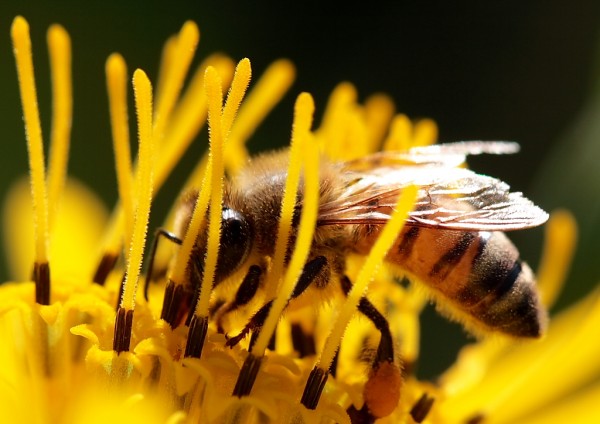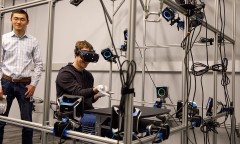By R.See, | February 14, 2017

Scientists have developed a drone to artificially pollinate plants to make up for the gap left by dwindling bee population. (Paul Stein/CC BY-SA 2.0)
Scientists at the National Institute of Advanced Industrial Science and Technology in Japan are developing bee-like drones to assist natural pollinators in maintaining the ecosystem.
Researchers are looking to find ways to compensate for the dwindling bee population around the world while determining the cause of the decline in the first place. The scientists came up with the radical idea of making use of drones by mistake.
Like Us on Facebook
Initially, the team at AIST were conducting an experiment to create liquids that could be used as electrical conductors. The resulting creation was an ionic gel that could be adhesive enough to carry small substances, which in this case was pollen.
A chemist at the AIST, Eijiro Miyako, stated that the current bee population managed to "emotionally motivate" him to act on a solution. The chemist came up with the idea of using the gel from a previous experiment when it showed signs of being a great carrier of pollen.
The team conducted experiments to test the potential of the gel to transport pollen, and it turns out that the viscosity of the gel was perfect to be a good adhesive substance to carry the delicate cargo. The gel was sticky enough to catch and transport, but not sticky enough to be a trap.
Soon after, the team came up with the idea of using the seemingly failed experiment to attach the iconic gel to an insect-like drone's underbelly to be used as an artificial pollinator. The team aims to assist natural pollinators, rather than creating a system to replace the bee population.
The bee-like drones carry the ionic gel under its body and imitates the bee's system of carrying pollen and transporting it to another plant for the foliage to thrive.
Biologists are looking for a way to determine the cause of the rapid decline in bee population in the hopes of preventing the decline or even landing on a permanent solution to boost the population altogether.
It remains to be seen if there's an immediate solution to the matter. Meanwhile, the insect-like drones could be a temporary fix.
-
Use of Coronavirus Pandemic Drones Raises Privacy Concerns: Drones Spread Fear, Local Officials Say

-
Coronavirus Hampers The Delivery Of Lockheed Martin F-35 Stealth Fighters For 2020

-
Instagram Speeds Up Plans to Add Account Memorialization Feature Due to COVID-19 Deaths

-
NASA: Perseverance Plans to Bring 'Mars Rock' to Earth in 2031

-
600 Dead And 3,000 In The Hospital as Iranians Believed Drinking High-Concentrations of Alcohol Can Cure The Coronavirus

-
600 Dead And 3,000 In The Hospital as Iranians Believed Drinking High-Concentrations of Alcohol Can Cure The Coronavirus

-
COVID-19: Doctors, Nurses Use Virtual Reality to Learn New Skills in Treating Coronavirus Patients











